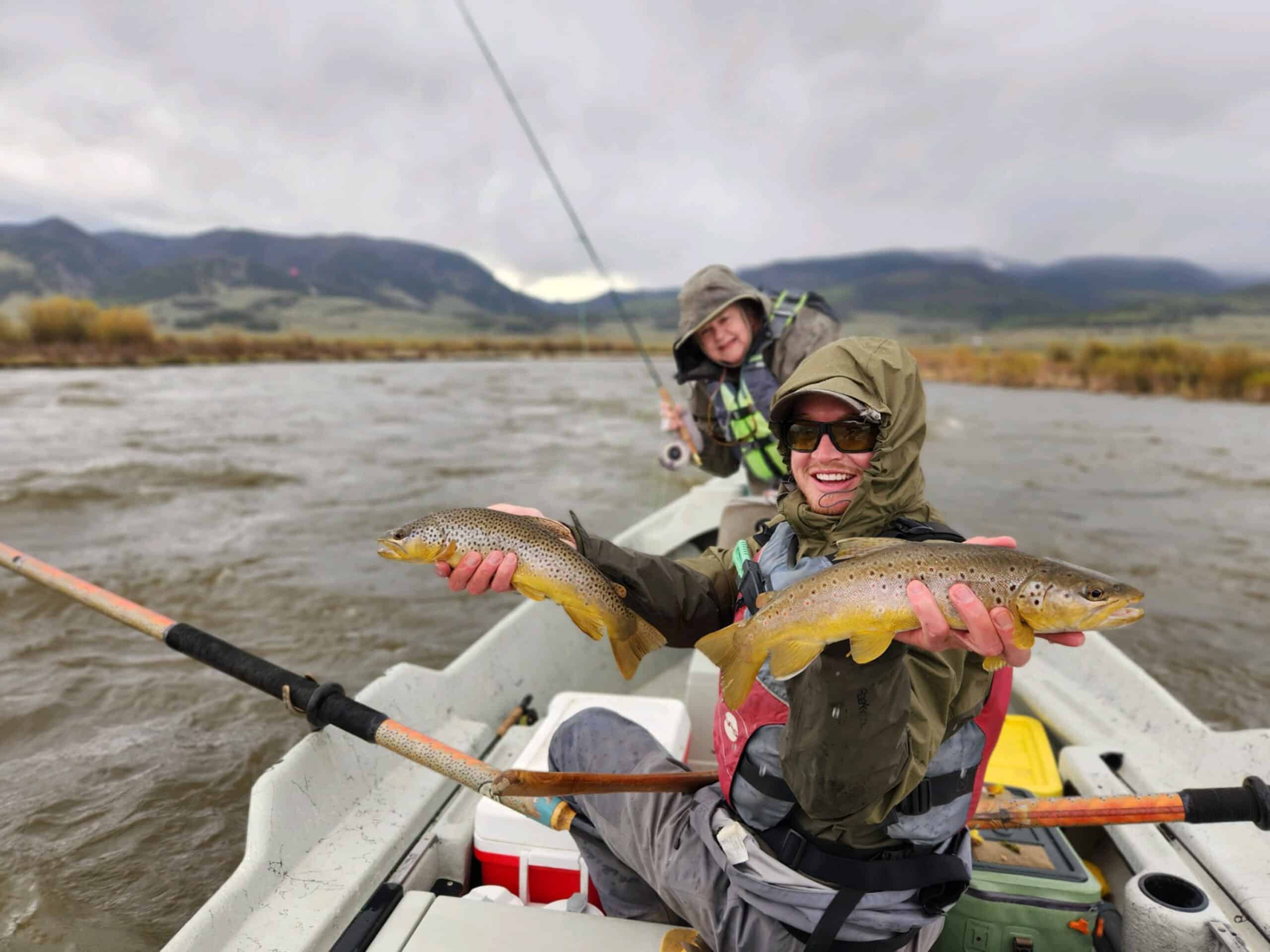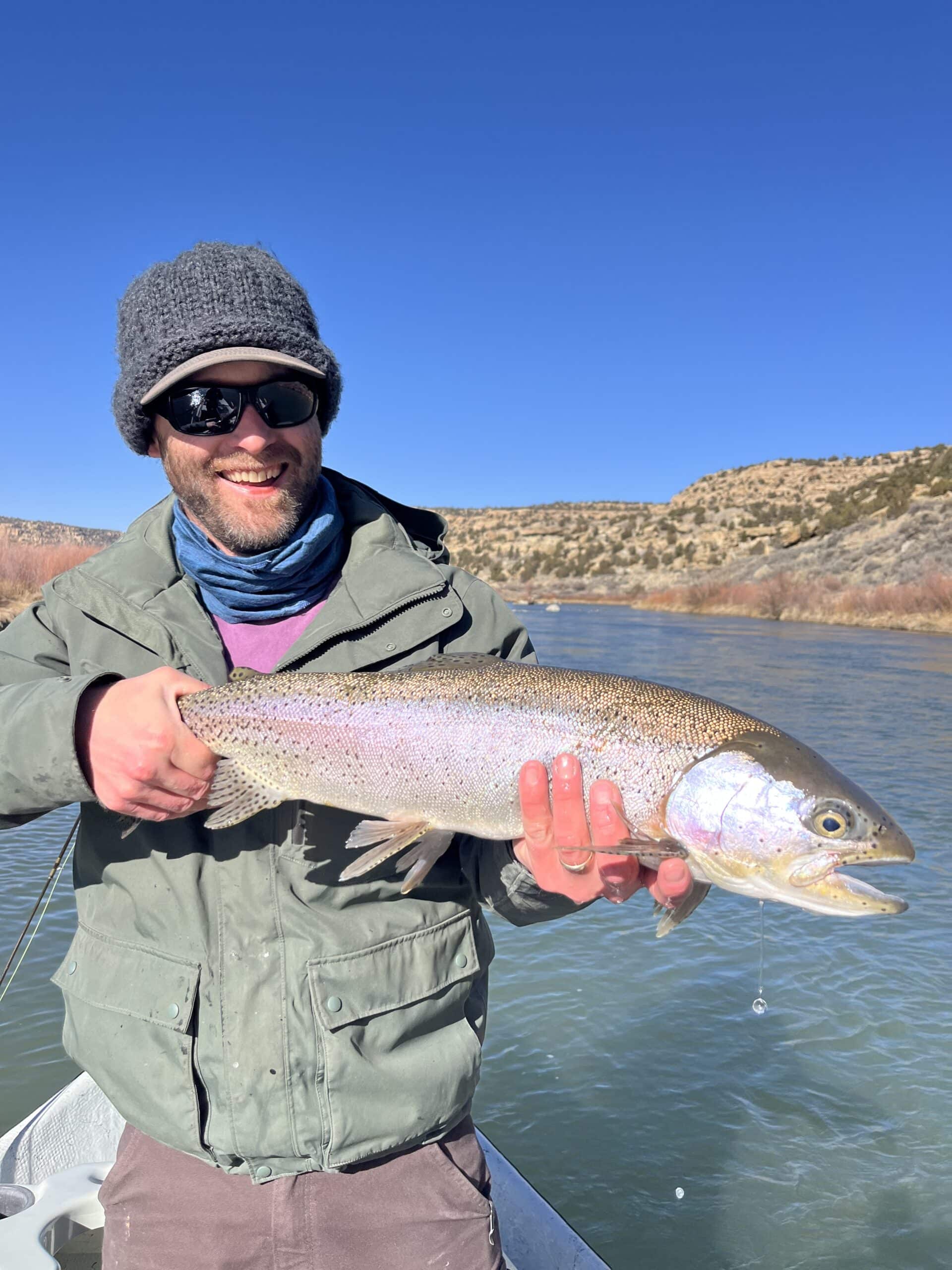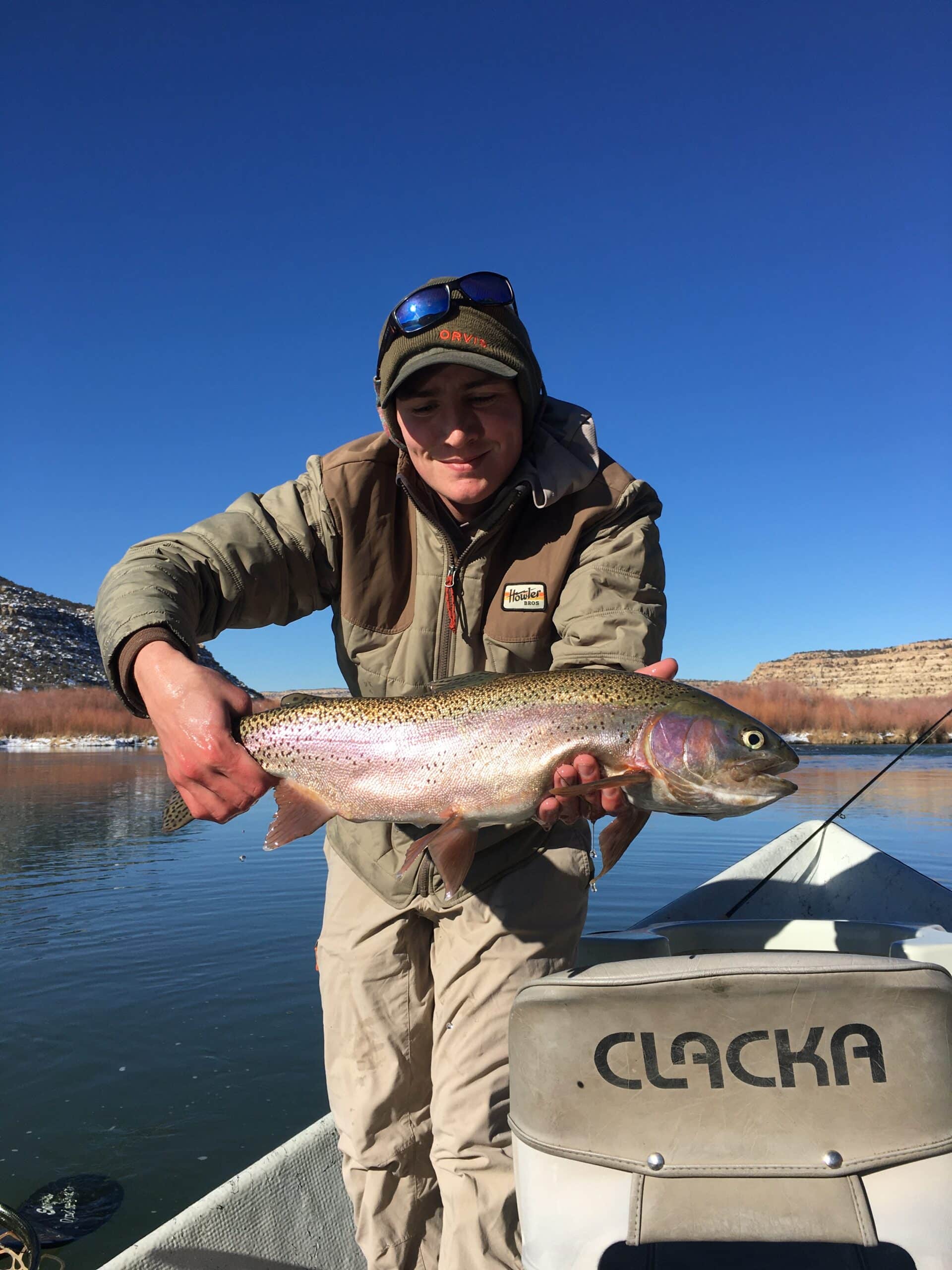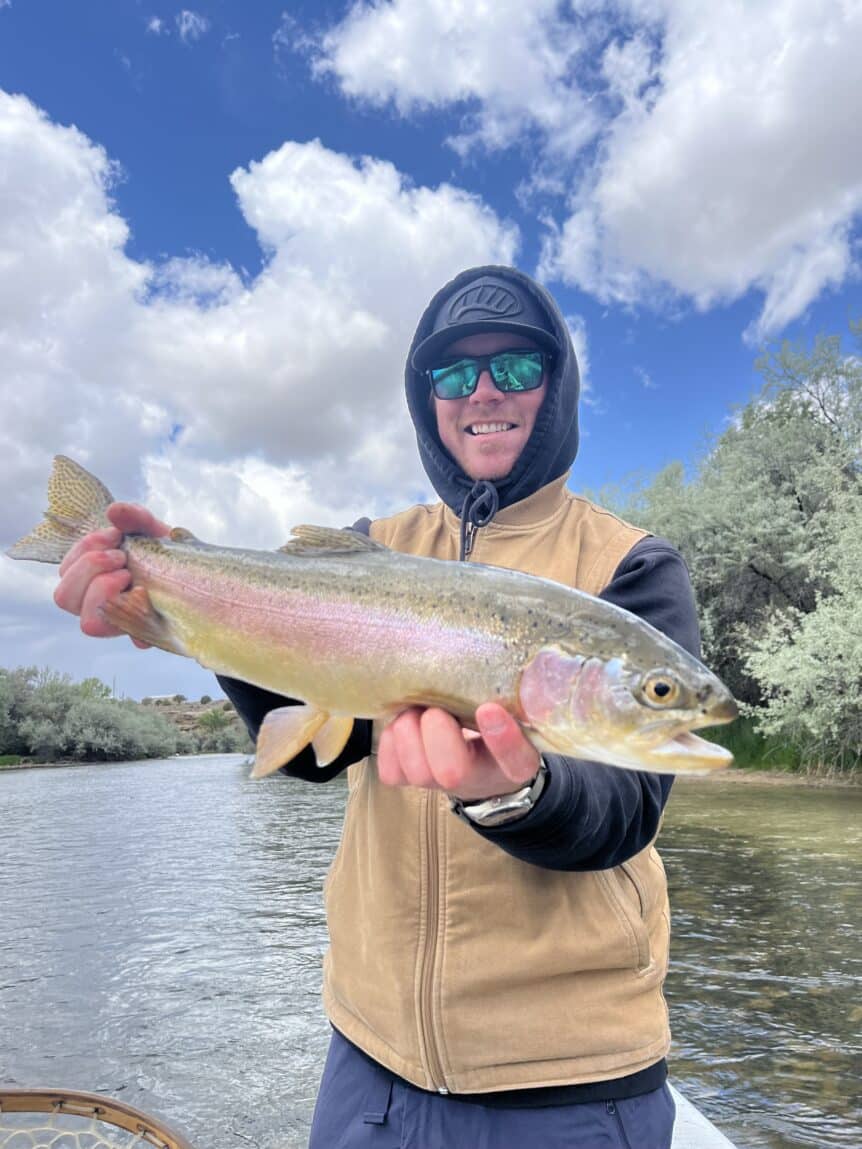Getting the opportunity to go fishing out of a drift boat or fishing raft is amazing and there are a few things an angler can do to optimize their time on the water. From basic boat etiquette to strategies to get the most out of each cast, this blog is going to cover the best practices when fly fishing out of a drift boat. We will go over some things that may be obvious to people who have fished out of a boat but many things that are simple don’t seem that way when it’s your first rodeo.
Safety
The biggest thing on any fishing trip is to stay safe while on the water. Every state has their own regulations on what guides need to carry on the water and what PFD’s (personal flotation device) need to be on board. If a guide hands you a PFD it’s usually because the state requires it for commercial trips and its a non negotiable so be a sport and put it on. 
Drift boats and most fishing rafts have a thing we call leg locks. The front angler is in front of the guide and they look like little horns or bars that curl back into the boat. This is for anglers to stand and lean into while fishing. Any person that plans on fishing a river out of a boat will make the leg locks their new best friend. Flat water or rapids, step into those bars and you will be game on. The back angler often only has one leg lock and they are located behind the guide in the boat. The one lock is just as sturdy and quite frankly it seems to hold people in better.
The last thing on safety is to always listen to your guide. They will go over different language to describe things like “bump” when the boat is going to go over or hit an object in the water. They may say something like “center up” which means the anglers should stand in the centerline of the boat to make the rowing easier or when going through faster water. Whatever it is, listen to the guide and make sure you’re on the same page before pushing off.
How to cast while fishing out of a drift boat
Besides safety, this is the most crucial part of the day. If there are two anglers in the boat that are on the same page about casting and direction of casting the day will be substantially better and more fish are going to be hitting the net.
Fundamentals of the cast
With two anglers in the boat, someone is going to have to throw backhand casts to avoid casting directly over the boat. This will help lessen the tangles between the two anglers and prevent hooking your fishing partner. Let’s break it down.
Imagine that both anglers are right handed. If the boat is moving down river and the guide wants you fishing off the right side of the boat then the front angler is going to be throwing back hand casts. Still holding the rod in their right hand, they will have to backcast over the left shoulder to avoid casting over the boat which is behind them. The back angler in this situation will be casting normal because they are in the back of the boat. If the boat switches to fishing river left, the front angler will be casting normal over their right shoulder and the back angler will now be throwing back hand casts.
Direction of the cast
This may be the single most important part of getting a good drift and putting fish in the boat. The front angler should almost always be casting diagonally downstream from the boat. Not straight down stream but not straight across either. The water speed often has a lot to do with how far a person is going to lead the boat (leading the boat is casting downstream from the boat) and the water speed is often changing. 
If the front angler makes a good cast slightly downstream then the back angler can also make a good cast down. The back angler is essentially casting to the midway point on the boat if you were to draw a line from the guide seat to the bank. If the back angler is casting back up stream than the back angler is forced to do the same and the boat is going to be out of whack and there won’t be many fish put in the boat. Fishing out of a drift boat can be super effective and fun when both anglers are doing their part.
When someone casts slightly downstream then their flies will land downstream of the fly line which creates a good start to the drift and sets them up great for mending. Casting slightly down will also help the angler see what spots are coming up and give them a better chance of being on time for their next cast. I always say to fish in the future, not the past.
Landing Fish
Bringing fish into the boat and successfully putting them into the net is awesome and takes a little work. As the fish starts to come close to the boat they will often try and pull right under the boat and snap you off. The best thing an angler can do is stretch their hand out and pull away from the boat with the rod. Sticking the arm straight out is the best thing to do because the line won’t be connecting with the chines of the boat.
Some fish try to go under the boat while other fish are going to come up to the surface of the water and start thrashing. The best thing an angler can do now is lower the rod tip to one side and try to bring the fish head back under the surface of the water. This will ease up the tension on your tippet and help settle the fish down. If a fish comes to the surface and they are not thrashing, start to pull! They will glide across the water and into the net. Always be ready for one more big pull no matter how ready the fish seems!
Getting snagged on the river bottom or bank
Getting flies stuck on the bottom of the river or on the bank while drifting by is inevitable. Some rivers are much faster than others and sometimes your guide won’t be able to get you upstream of your flies. The best thing to do is point your rod right at the flies (so there is no bend in the rod) and hold tightly to your fly line to break the flies off. This will save you from snapping your rod or the guides rod. Some very common terminology for this is “point and shoot”. 
If your guide can get you back up stream they will most likely want you to bring your rod on the upstream side of the flies and briefly loose tension and then set the hook. Hopefully your flies come right out! The idea is that your flies floated down into the debris so you need to get upstream and pull it the way it came. Most of the time it works but losing flies is a part of the fly fishing game.
Thats a wrap
Fishing out of a drift boat or raft is a phenomenal experience that everyone should try. Anglers will cover lots of water and see scenery they otherwise wouldn’t. Fishing out of a boat is a great way to work on casting without obstructions in the back cast and putting flies where wade anglers can’t access.
Hopefully this will help some of you feel more at home in a boat and get you out on the water! If anyone has questions click HERE and reach out!


